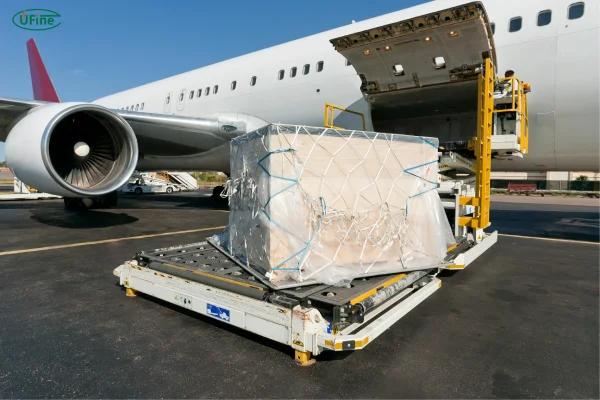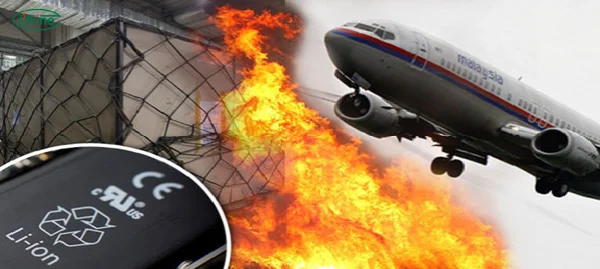
- Part 1. The role of lithium batteries and their safety concerns
- Part 2. Aircraft lithium batteries: why special attention is needed for air travel
- Part 3. Regulations for lithium ion batteries on planes
- Part 4. The risk of lithium batteries in air travel
- Part 5. Responding to battery incidents on aircraft
- Part 6. Tips for passengers traveling with lithium-ion batteries
- Part 7. Conclusion
Part 1. The role of lithium batteries and their safety concerns
Lithium-ion (Li-ion) batteries are favored for their lightweight, high energy density, and long cycle life. These characteristics make them ideal for powering modern devices, including laptops, smartphones, cameras, and increasingly, electric vehicles. However, these batteries are not without risks. Lithium-ion batteries store significant amounts of energy, and if mishandled or damaged, they can lead to dangerous situations, such as fires or explosions. This is mainly due to their volatile chemical composition, where a fault such as overcharging, overheating, or physical damage can trigger thermal runaway, a self-perpetuating cycle of overheating that may lead to a fire.
In the context of air travel, these risks are amplified. When a lithium-ion battery malfunctions in the confined, high-pressure environment of an aircraft, the consequences can be severe. As such, both passengers and airlines must adhere to strict guidelines for the transport of lithium batteries. Understanding these regulations is crucial not only for compliance but for ensuring the safety of all individuals on board.
Part 2. Aircraft lithium batteries: why special attention is needed for air travel
An aircraft lithium battery refers to any lithium-ion or lithium metal battery that is used in devices such as mobile phones, laptops, cameras, power banks, and even medical devices. These batteries are present in a significant portion of the technology that passengers bring onboard aircraft. The primary concern with these batteries is that in certain circumstances—such as when they overheat, short-circuit, or are damaged—they can catch fire or even explode. This has raised significant concerns among aviation safety authorities, who have developed comprehensive regulations to mitigate the risk of lithium-ion battery incidents during air travel.
Part 3. Regulations for lithium ion batteries on planes
1. Carry-On vs. Checked Luggage
The primary regulation governing the transport of lithium ion batteries on airplanes is that they should always be carried in the passenger’s carry-on luggage, rather than checked baggage. This rule is based on the principle that, in the unlikely event of a battery malfunction, it is far easier for the flight crew to handle the situation in the cabin than in the hold. Cabin crew can immediately detect and respond to overheating or smoke, and passengers can access fire extinguishers or other emergency tools more quickly in the cabin. Furthermore, if a fire were to break out in the aircraft’s cargo hold, it could be catastrophic, as the crew would have little time to detect or contain it.
While checked luggage is still allowed for certain lithium-ion batteries, there are specific conditions. Any spare batteries must be transported with extra precautions, such as being placed in a fire-resistant bag or container. Additionally, many airlines prohibit placing spare lithium-ion batteries in checked luggage altogether, especially those with a capacity over a specific watt-hour limit.
2. Size Limits for Lithium-Ion Batteries
Most airlines and aviation safety organizations, such as the International Air Transport Association (IATA) and the Federal Aviation Administration (FAA), impose size restrictions on the lithium-ion batteries that passengers can carry. These limits are defined based on the battery’s watt-hour (Wh) rating, which is a measure of the battery’s energy capacity.
For most carry-on items, the following guidelines apply:
- Batteries with a capacity of less than 100 Wh (e.g., those found in smartphones and laptops) can be carried in carry-on luggage without any special restrictions.
- Batteries with a capacity of between 100 Wh and 300 Wh (such as those found in larger laptops, cameras, and some power tools) are permitted in carry-on luggage but may require special approval from the airline. Each passenger can carry a maximum of two spare batteries in this category.
- Batteries exceeding 300 Wh (used in larger devices or some medical equipment) are generally prohibited on passenger flights, unless prior approval has been obtained from the airline.
It is important to note that these regulations apply to spare lithium-ion batteries—batteries that are not installed in a device. Batteries installed in devices are typically exempt from these limits, provided they are in the devices being carried.
3. Proper Packaging and Protection
When carrying spare lithium-ion batteries in either carry-on or checked luggage, it is critical to ensure that the batteries are properly protected. The most common precautions include:
- Insulating terminals: Exposed terminals of lithium-ion batteries can lead to short circuits if they come into contact with metal objects. To prevent this, it is recommended to either cover the terminals with tape or store the battery in a protective case.
- Fire-resistant packaging: Airlines and regulatory bodies recommend that spare batteries be stored in fire-resistant bags or pouches, especially those with larger capacities. This helps to contain potential fires or overheating incidents and provides an additional layer of safety.
Part 4. The risk of lithium batteries in air travel
Despite the extensive safety measures and regulations in place, the inherent risks associated with lithium-ion batteries cannot be ignored. The most significant danger comes from the potential for thermal runaway, a process where a battery’s internal temperature increases uncontrollably, causing the battery to overheat and, in extreme cases, catch fire or explode. Several factors can contribute to thermal runaway, including:
- Overcharging: Charging a battery beyond its designed voltage capacity can trigger a chain reaction within the battery’s cells.
- Overheating: Excessive heat can cause the battery’s electrolytes to break down, leading to swelling, rupture, or ignition.
- Physical damage: A battery that is physically damaged—whether by dropping, crushing, or puncturing—can create internal shorts, leading to failure.
While the likelihood of a lithium-ion battery igniting during air travel is extremely low, the consequences of such an incident could be catastrophic. For this reason, airlines and aviation bodies around the world take the transportation of lithium batteries very seriously, with comprehensive training for crew members on how to respond to battery fires.
Part 5. Responding to battery incidents on aircraft
In the rare event that a lithium-ion battery fire does occur, flight crews are trained to handle the situation using specialized equipment. Fire-resistant containers, such as flame retardant containers or bags, are commonly used to contain overheated batteries and limit the risk of a fire spreading.
Fire suppression systems on aircraft are designed to quickly neutralize any onboard fires, and specific firefighting training is provided to cabin crew. However, since lithium-ion battery fires are often difficult to extinguish with traditional methods (like water), specialized dry chemical fire extinguishers and fire-resistant containers are typically employed to tackle these emergencies effectively.
Part 6. Tips for passengers traveling with lithium-ion batteries
To ensure that you comply with airline regulations and travel safely, consider the following tips when flying with lithium-ion batteries on a plane:
- Check your airline’s policies: Regulations can vary by carrier, so always confirm specific rules with your airline before flying.
- Pack devices in your carry-on: If possible, pack devices with lithium-ion batteries in your carry-on luggage. Ensure they are switched off to avoid accidental activation.
- Avoid damaged batteries: Do not travel with damaged batteries. If your device or battery shows signs of wear or malfunction, consider replacing it before your flight.
- Follow size restrictions: Ensure that your spare lithium-ion batteries fall within the allowed watt-hour limits, especially if you are traveling internationally.
Part 7. Conclusion
Lithium-ion batteries, while essential to modern life, present unique challenges when transported on aircraft. Given their high energy density and potential for catastrophic failure, it is vital that both passengers and airlines follow the established safety protocols. By adhering to guidelines for battery size, packaging, and handling, we can minimize the risk associated with lithium-ion batteries on airplanes and help ensure the safety of all those aboard.
Whether you’re traveling with a smartphone, laptop, or spare battery, taking the necessary precautions can go a long way in reducing potential hazards. With the proper awareness and adherence to safety measures, the transport of aircraft lithium batteries can be managed safely, ensuring that air travel remains a secure and efficient means of transportation.
Related Tags:
More Articles

What Is the Lithium Battery Short Circuit?
What is the lithium battery short circuit? To understand a lithium battery short circuit, we first need to understand how the battery works.
How to Distinguish Battery Cells, Battery Modules, And Battery Packs?
Discover how battery cells, modules, and packs work, their engineering roles, and practical guidance for safe and efficient design.
What is the Difference Between Silver Zinc Battery vs. Lithium-ion Rechargeable?
Compare silver zinc and lithium-ion rechargeable batteries: energy density, cycle life, safety, cost, and uses in drones, medical devices, EVs, and electronics.
What are Watts and Watt Hours in Battery?
Understand watt vs watt-hour in batteries: key differences, how to calculate capacity, and why they matter. Includes free comparison table.
Best 10 Blood Pressure Monitor Battery Review: Finding the Most Reliable
Are you looking for a reliable Blood Pressure Monitor battery? Here is a complete guide with the top 10 best blood pressure monitor batteries.




